Best dehumidifier Australia
Which is the best dehumidifier in 2025?
VIEW OFFERBest of 2025: Find the right dehumidifier in Australia
With winter bringing cold and wet weather to much of the UK, it’s no surprise to see so many people looking for the best dehumidifier. With increased rainfall and less warm weather to dry the moisture, many homes can be let at risk of damp and the associated problems, making it useful to have the best dehumidifier for your home. Looking for the right dehumidifier is often difficult, especially when trying to understand what size and type is best for your needs, so check out this buying guide to help you find the best dehumidifier.
The 10 best Dehumidifiers in Australia (February 2025)
The bestseller list compares Dehumidifiers from multiple brands
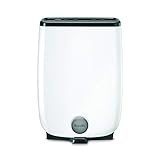
- Efficiency: Consistent performance from 5-40°C year-round.
- Filtration: 2-stage system removes dust, pet dander, and allergens.
- Capacity: Ideal for mid-sized rooms up to 50m².

- Warranty: One-year replacement, 60-day return, and lifetime customer service included.
- Modes: Features powerful and quiet modes for varied dehumidification needs.
- Capacity: Suitable for high humidity with 2500ml water tank and large dehumidification area.
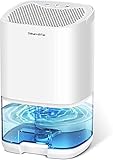
- Energy: Uses only 0.96KW; effective and energy-saving.
- Quiet: Ultra-quiet operation ensures a sleep-friendly environment.
- Efficiency: Thermo-electric Peltier technology replaces conventional methods for high efficient dehumidification.
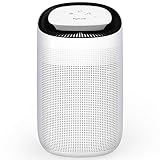
- Coverage: Suitable for various rooms, including bedrooms, kitchens, and basements.
- Usability: Simple one-button start and adjustable speed settings.
- Efficiency: Ensures rapid moisture removal and improved air quality.

- Safety: Auto shut-off feature prevents overflow by stopping operation when the tank is full.
- Quietness: Ultra-quiet operation with noise below 33dB for minimal disturbance.
- Efficiency: Removes up to 750ml moisture daily for effective dehumidification.
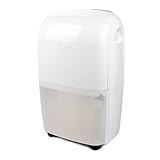
- Drainage: Includes continuous drainage with 1m hose.
- Controls: Full electronic controls with LCD display and settings.
- Performance: Extracts 20L/day, covers up to 30 m² or 75 m³.
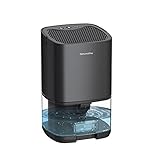
- Portable: Compact size suitable for standard Australian sockets.
- Quiet: Operates with minimal noise for uninterrupted sleep.
- Efficiency: High dehumidification with Thermo-electric Peltier technology.
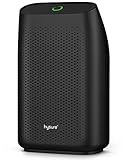
- Auto-Off: Automatically shuts off when the tank is full.
- Quietness: Noise level is below 33dB.
- Capacity: 700ml tank extracts up to 300ml daily.

- Quietness: Offers normal and sleep modes for low noise operation.
- Portability: Lightweight and suitable for various room sizes.
- Capacity: Equipped with a 3000ml tank for efficient moisture removal.
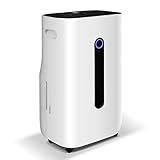
- Energy: Low consumption, no chemicals, eco-friendly.
- Control: Bright LED display allows easy setting customization.
- Efficiency: Removes up to 25 liters/day to protect walls, curtains, furniture.
Affiliate link: We are a participant of the Amazon Associates Program. If you buy a product through this link we might earn a small commission from Amazon at no extra charge for you. As an Amazon Associate we earn from qualifying purchases.
- Read the definitive dehumidifier buying guide
- View the dehumidifier picks and see how they rank in the top list
dehumidifier buying guide
Do you want to buy a good dehumidifier? This is all you need to know.
A short explanation: What are Dehumidifiers?
A dehumidifier is a type of device used to reduce the humidity in a room. It works by sucking in air, removing the moisture from it, and then blowing the dry air back out. A good dehumidifier helps to increase the quality of air in a room by reducing its humidity, which can help to reduce dust and damp, as well as prevent mould from developing.
What are the benefits of good Dehumidifiers?
A dehumidifier is a great investment for anyone that suffers from a humidity problem in their home. This common issue can result in various other problems, including dust mites, mould, and mildew, with the increased moisture in the air acting as a breeding ground for these fungi. So, by using a good dehumidifier to reduce the humidity in a environment, you also lower the risk of the aforementioned problems developing. This is especially great for people that are known to have allergies towards dust mites, along with preventing mould from growing on clothes and other belongings.
How to choose the best dehumidifier in 2025?
Choosing the best dehumidifier can be rather difficult as there are so many things to consider. As is the case with all home appliances, knowing what to look for makes it easier to choose a high-quality dehumidifier that will work exactly as you need it to. Here are some important things to consider when you are choosing a dehumidifier:
- Capacity: As you may expect, the capacity of a dehumidifier will impact its overall performance, so the right capacity is essential to get the most from the appliance. Smaller dehumidifiers have a capacity of extracting 20 litres of water from the air per day, and they best best for one, two bedroom houses. If you have a three or four bedroom property, a large capacity of 25 litres is recommended, while even higher capacities of 30 litres plus are recommended for even larger homes.
- Location: One of the main advantages of a dehumidifier is its ability to remove moisture in hard to reach places where airflow is limited. When buying the dehumidifier the room with the worst airflow is the best place to use it, so should you’re buying the appliance, try to identify the location with poor airflow and high moisture, such as a basement or bathroom, then choose from there!
- Noise: While a great investment for the home, a dehumidifier can produce a low-level noise that some people may find annoying, especially when sleeping. To ensure you are not disturbed by noise created from the appliance, be sure to check the volume level is something you can tolerate.
Which types of Dehumidifiers are available to buy in Australia?
There are a few different types of dehumidifiers available to buy:
- Refrigerant Dehumidifier: The most common type of dehumidifier features a compressor and coolant that chills metal plates inside the device, causing moisture in the air to collect as water and be separated from the air. It works great in warm temperatures, making it especially useful during the summer.
- Desiccant Dehumidifier: This type of dehumidifier warms a special type of chemical that dries and reabsorbs moisture, which is then expelled from the device. It is better suited for use in colder temperatures, so is a good option for using in unheated spaces during winter.
- Whole House Dehumidifiers: This type of dehumidifier is installed in a fixed location within your home, being connected directly to the plumbing to remove water from the air and release it outside. It offers the most comprehensive dehumidifying for the entire home but is also the most expensive option.
